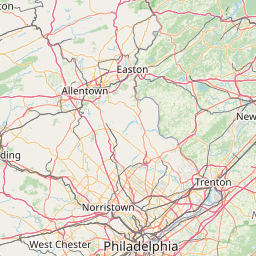Incidence of Thyroid Cancer
Summary Indicator Report Data View Options
Incidence of Thyroid Cancer by County, Males, 2017-2021






Incidence of Thyroid Cancer by County, Females, 2017-2021






Why Is This Important?
During 2021, 429 male and 1,325 female New Jersey residents were diagnosed with thyroid cancer. Thyroid cancer is different than many adult cancers in that it occurs about 3 times more often in women than in men, and it is more frequently diagnosed in younger adults.
Definition
Incidence rate of invasive thyroid cancer for a defined population in a specified time interval. Rates are age-adjusted to the 2000 U.S. Standard Population. Rates are per 100,000 population.
Data Sources
- SEER*Stat, National Center Institute
(https://www.seer.cancer.gov/seerstat) - Bridged-race population estimates, National Cancer Institute
(https://seer.cancer.gov/popdata/)
How the Measure is Calculated
| Numerator: | Number of new cases of thyroid cancer among a defined population in a specified time interval. |
| Denominator: | Defined population in a specified time interval. |
How Are We Doing?
Between 1990 and 2021, the age-adjusted thyroid cancer rate in females rose from 6.9 cases per 100,000 to 26.3 cases per 100,000. In males, the increase was smaller, from 2.9 cases per 100,000 to 8.4 cases per 100,000 in 2020. The reason for the sharp increase in thyroid cancer incidence rates, especially in recent years, is unknown. Theorized explanations include increased diagnosis of thyroid cancer by medical practitioners and increased prevalence of possible risk factors such as diagnostic radiation and obesity. The lifetime risk of developing thyroid cancer is 1 in 153 for men and 1 in 58 for women.
What Is Being Done?
A Comprehensive Cancer Control Plan was developed by the Task Force on Cancer Prevention, Early Detection and Treatment in New Jersey which aims to reduce the incidence, illness and death due to cancer among New Jersey residents. https://www.nj.gov/health/ces/public/resources/occp.shtml
Available Services
The New Jersey Department of Health (NJDOH) has many programs and partnerships related to cancer data and information, cancer resources and cancer prevention.
Cancer Epidemiology Services: https://nj.gov/health/ces/
Interactive New Jersey cancer incidence and mortality data, as well as numerous publications, are available through the NJDOH website for cancer statistics and mapping.
https://www.nj.gov/health/ces/cancer-researchers/cancer-data/index.shtml
Office of Cancer Control and Prevention: https://www.nj.gov/health/ces/public/resources/occp.shtml
NJ Cancer Education and Early Detection (NJCEED): https://www.nj.gov/health/ces/public/resources/njceed.shtml
NJ Commission on Cancer Research:
https://www.nj.gov/health/ces/cancer-researchers/njccr.shtml
More Resources
More information on thyroid cancer is available from the NJ State Cancer Registry: https://nj.gov/health/ces/documents/briefs/thyroid_cancer_incidence_bystage.pdf, and https://nj.gov/health/ces/documents/briefs/thyroid_cancer_survival_byrace_eth.pdf.
 Official Site of The State of New Jersey
Official Site of The State of New Jersey
